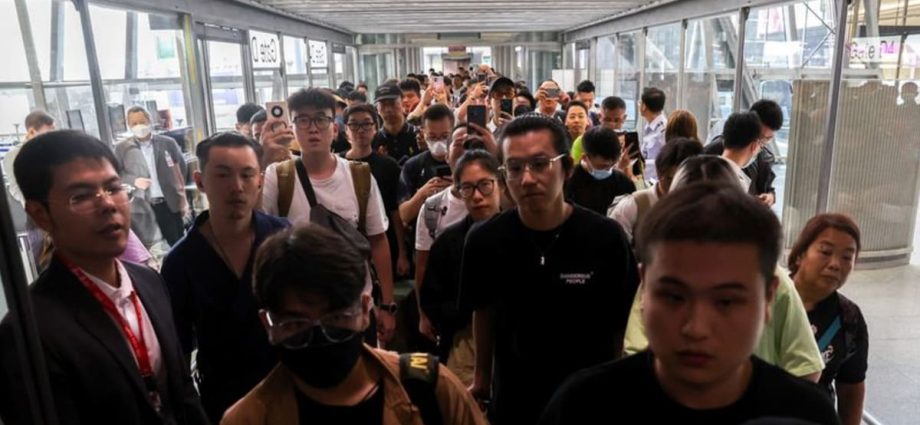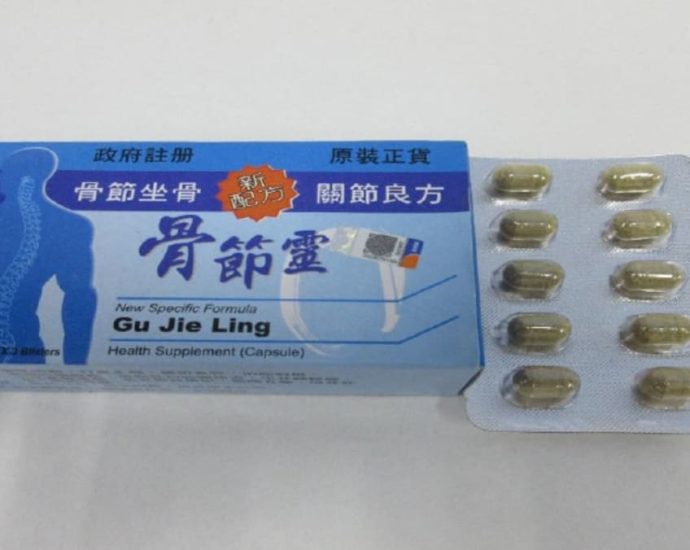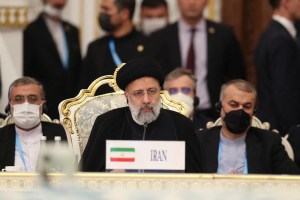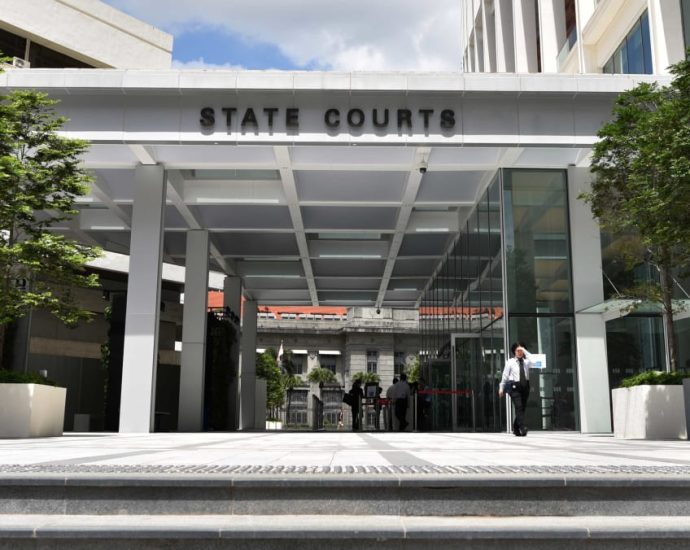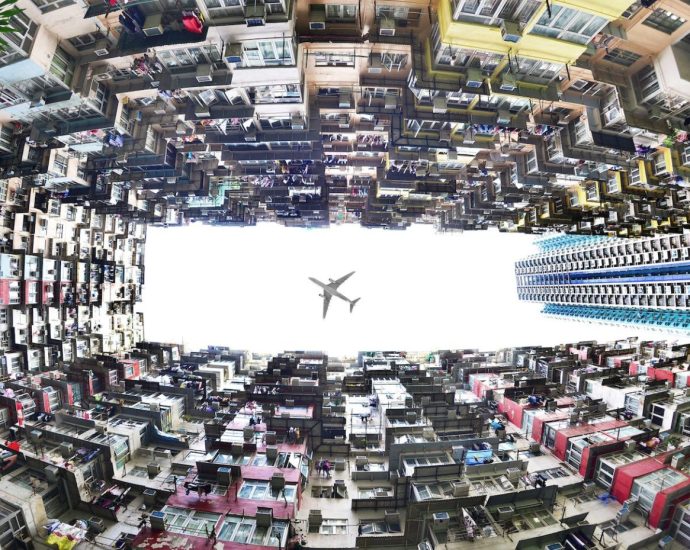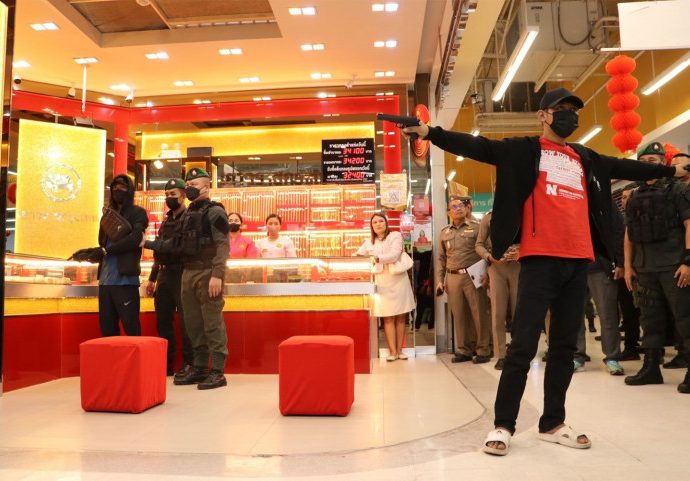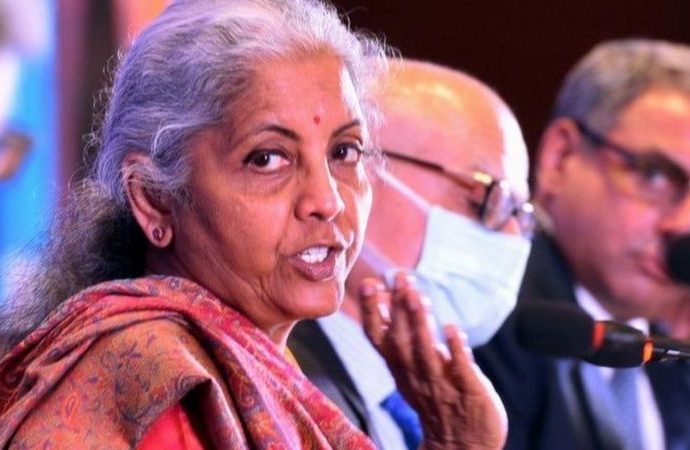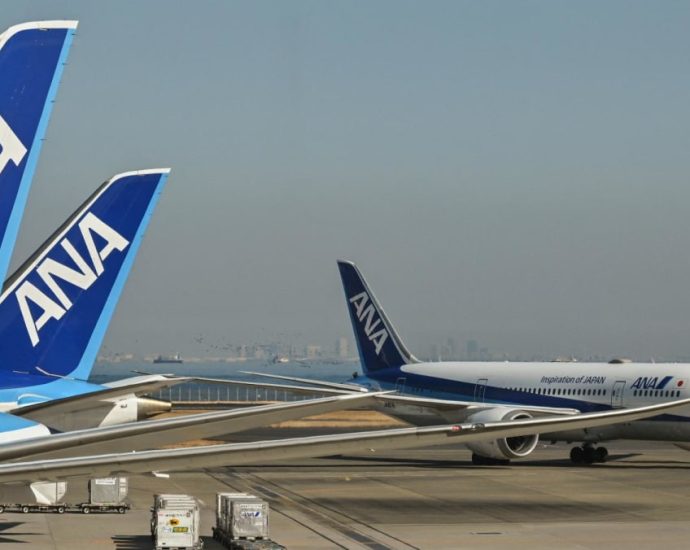Thailand airport operator expects 8 million Chinese visitors this year
BANGKOK: State-owned Airports of Thailand (AOT) expects 8 million Chinese tourists arrivals for 2024, it president said on Thursday (Feb 1), helped by visa waiver programme. The announcement comes after the two countries mutually waived visa entry requirements for their nationals effective in March. Thailand removed visa requirements for ChineseContinue Reading
Myanmar junta in a make-or-break Rakhine fight – Asia Times
As the tempo of conflict in Myanmar’s northeast slows after months of dramatic insurgent advances, the civil war’s center of gravity has shifted decisively to the western seaboard state of Rakhine.
In the wake of the third anniversary of the disastrous military coup of February 1, 2021, that set Myanmar on the path to popular revolt, the second half of the current dry season through until the onset of the monsoon in May will almost certainly see a sharp and perhaps decisive escalation of hostilities in the state.
The ethno-nationalist Arakan Army (AA) – a member of the tripartite Brotherhood Alliance that overran wide swathes of Shan state in November and December – appears poised for a bold, all-out campaign in its home state aimed at replicating the sweeping successes achieved in the northeast and ejecting junta regime forces from Rakhine.
The AA returned to fighting in mid-November 2023 after agreeing to a Rakhine state ceasefire in November 2020, just months before the coup.
The stakes could hardly be higher. If in the coming weeks the AA succeeds in building on recent military momentum and wresting control over a vitally important state located between the Bay of Bengal and the Myanmar heartland, it would effectively present the military’s State Administration Council (SAC) regime with a defeat on a scale that in broad strategic terms would mean the war has been lost.
Scattered hostilities across the national heartland might well continue for some months but the loss of Rakhine would confront the Naypyidaw regime either with inevitable and accelerating collapse or an even more rapid implosion.
If, on the other hand, the Myanmar Army can succeed in battling the AA to a standstill before the onset of the rains, the resulting pause will have important military and diplomatic repercussions by throwing a lifeline to a drowning regime and potentially ensuring its survival into 2025.
The struggle for Rakhine will require the military’s holding onto key urban centers and with the support of aviation, artillery and, importantly, naval assets, inflicting prohibitively high casualties on the insurgents as it did in an earlier round of hostilities in 2019 and 2020.
Insurgents with a cause
Led by Twan Mrat Naing, 45, a powerfully charismatic leader who in many respects personifies a generation of revolutionary youth, the AA enters the campaign with some telling advantages, not least the momentum of victory in the north and its impact on morale.
Having enjoyed widespread popular support since it began infiltrating Rakhine from its northern training bases in the 2014-2016 period, the Rakhine rebels benefited immensely from a three-year ceasefire agreed with the military between November 2020 and November 2023.
The pause in conflict saw the insurgents’ political wing, the United League of Arakan (ULA), make major strides in consolidating control over rural areas and establishing parallel administrative structures.
At the same time, the group’s armed wing used the hiatus to recruit, train and reorganize its battle-tested but depleted forces. With the exception of the northeastern-based United Wa State Army – which remains in a ceasefire pact with the SAC regime – and its own ally and mentor the Kachin Independence Army (KIA), the AA arguably ranks today as the best organized and most effective insurgent force in the country.

Force levels in a dynamic military situation are difficult to estimate and nowhere near the 30,000 troops the AA itself claims, a figure which may include ULA operatives and mobilized manpower not yet operational in military units. However, it is likely that in addition to its northern contingent of around 1,500 troops operating in Kachin and Shan states, the AA fields at least 15,000 troops in the Rakhine and adjacent Chin state theater.
Logistics have posed a perennial headache for a force that was born and grew in northern Kachin state as a protégé of the KIA but has sought to extend its footprint across a home state over 600 kilometers away.
However, the seizure of Paletwa township on the Kaladan River in neighboring Chin state in December 2023 and January 2024 – the opening gambit in the AA’s current campaign – will undoubtedly serve to relieve supply bottlenecks and facilitate operations across most of northern and central Rakhine.
Indeed, if the Brotherhood Alliance can succeed in accelerating the southward flow of weaponry and ammunition recently captured in the northeast into Chin state, the logistical significance of Paletwa and the Kaladan River conduit will become even more critical in the coming months.
That organizationally challenging task will require the cross-country transport of large quantities of ammunition and support weaponry – mortars and anti-aircraft heavy machine guns in particular – from Shan state via Sagaing and Magwe south to Paletwa.
While morale is undoubtedly high following the successes of 10.27 in Shan state and the Paletwa phase of the Rakhine campaign, analysis of the AA’s prospects in the coming months is complicated by two broad unknowns.
One relates to organization and hinges on the extent to which a force that has emerged from small-unit guerrilla conflict is capable of conducting mobile warfare that entails moving well-equipped main force units of battalion-size or larger rapidly across the country in support of shifting operational priorities as distinct from leaving the heavy lifting to local township-based forces.
The second unknown turns on strategy over the coming three months and whether, as some commentators believe, the AA command will attempt to deliver a rapid knock-out blow to SAC forces by encircling and overrunning the state capital of Sittwe.
The protracted battle for the riverine township of Pauktaw, 20 kilometers east of Sittwe which began on November 15 just two days after the AA returned to war, clearly suggests that the Sittwe option is on the table. So, too, does the number of civilians seeking to secure tickets on fully booked flights out of the embattled city.
An alternative and arguably less risky strategy than a meat-grinder battle for the state capital would involve prioritizing the capture of outlying township centers with far weaker defenses.

Maungdaw and Buthidaung on the border with Bangladesh along with Rathedaung lie to the north of Sittwe, while Kyauktaw, Mrauk-U and Minbya – all already under attack – are located on the main highway out of Rakhine to the east. The fall of one or two might trigger a domino collapse along the lines seen in Shan state in late October and November.
However, the success of such a strategy would depend critically on a capacity for well-coordinated simultaneous operations against different locations aimed at dividing and stretching the regime’s response, particularly from the air. But for the AA, these are largely untested waters.
Military muscle
Even following the loss of Paletwa and a string of outposts along the Indian border, any expectations that a replay of Shan state-style collapse is inevitable are likely to come up against hard realities. For all AA’s capabilities, there is no guarantee it will succeed.
Poverty-stricken Rakhine was for decades a military backwater for the Myanmar Army, a source of recruits and a theater for periodic drives against a defenseless Muslim Rohingya minority population. Over the past decade, however, that situation has changed radically.
At the purely military level, the second half of the decade saw the steady rise of both the AA and a perceived Rohingya threat following attacks by the rag-tag Arakan Rohingya Salvation Army in 2016 and 2017 that triggered the expulsion of over 700,000 Rohingya into Bangladesh in military “clearance operations.”
Both developments put a premium on the importance of border security along the frontier with Bangladesh, which was already a major trafficking route for Shan state-produced methamphetamine feeding growing urban markets in Bangladesh.
At the same time, the importance of Rakhine was further elevated by the development of off-shore natural gas deposits; a steady build-up of naval forces against the backdrop of maritime disputes with Bangladesh; and the construction of the Kyaukphyu deep sea port and Special Economic Zone as the jewel in the crown of China’s Belt and Road ambitions in Myanmar.
As a result, even before the conflict with the AA erupted into full-scale hostilities in January 2019, the state was already well on the road to militarization.
The army’s order of battle included three divisional-size Military Operations Commands (MOCs) in Buthidaung, Kyauktaw and Taungup, a Regional Operations Command at Sittwe and the Western Regional Military Command at Ann in the center of the state. Support forces came in the shape of a significant Border Guard Police presence and naval infantry units.
By the time the war with the AA reached its height in early 2020, regionally based forces had also been heavily reinforced by elements of several of the army’s ten Light Infantry Divisions (LIDs) based out-of-state and a significantly beefed up naval and air force presence.
Significantly, the three-year ceasefire between November 2020 and November 2023 did little to reduce this level of deployment. Indeed, even before Operation 1027 in Shan state gave warning that the AA would likely return to war in Rakhine and despite mounting pressures elsewhere in the country, the army further reinforced its footprint in the state.
Today it would be surprising if the military is unable to muster at least 15,000 combat-capable troops in Rakhine – or, in a ball-park calculation, a force level roughly on a par with the AA.

Given a rule of thumb holding that an attacker typically requires a three-to-one advantage over a defender to be in reach of success, this broad ratio is hardly good news for the AA and further underscores the importance of a mobile campaign in which insurgent forces can be rapidly deployed to achieve local superiority over priority targets.
Against this backdrop, the military also enjoys other salient strengths. Geographically, the proximity of Rakhine to major centers of Pathein and Yangon obviously facilitates resupply by sea and air.
At the same time, the army can count on support from numerous offshore naval assets largely invulnerable to insurgent fire including a helicopter-carrying landing platform dock (LPD) capable of transporting troops and a significant riverine capability based on fast patrol and landing craft. Above the battlefield, forward air bases at Sittwe and Ann position ground attack helicopters and jets a few minutes flying time from key townships.
What is all but impossible to gauge is the often-critical element of morale. It is now commonplace to note that the Shan campaign of late 2023 has dealt a body blow to SAC regime morale and to that extent the possibility of a dramatic collapse in Rakhine cannot be entirely discounted.
Equally, however, it would be a mistake to extrapolate from events in Shan state where strategic surprise and coordination between the Brotherhood allies proved decisive and assume that similar cascading defeats can be inflicted on the army in Rakhine. Most army units are relatively fresh, certainly well-supplied and in many cases fighting with their backs to the wall.
The convergence of these factors is likely to push surrounded garrisons to levels of extreme violence and a willingness to flatten entire towns in order to “save” them. And the ensuing displacement of the civilian population will almost certainly trigger a humanitarian crisis on a scale beyond that suffered in eastern Karenni state, where fighting has driven well over two-thirds of a population of some 300,000 from their homes.
Whatever its outcome, the impending battle for Rakhine is unlikely to secure the survival in the long term of a regime which politically, economically and now militarily has exhausted whatever credibility it may once have enjoyed. It will, though, have a crucial influence on how much longer the agony of Myanmar must last.
Anthony Davis is a Bangkok-based security analyst.
HSA warns against use of health supplement that caused elderly woman to develop Cushing’s syndrome

POTENT MEDICINAL INGREDIENTS FOUND
An analysis by HSA detected Gu Jie Ling contained dexamethasone (steroid) and cetirizine (antihistamine) – both potent medicinal ingredients.
The authority said that dexamethasone is a potent steroid that is “usually prescribed for inflammatory conditions and should only be used under strict medical supervision”.
“Long-term unsupervised use of steroids can cause increased blood sugar levels (which may lead to diabetes), high blood pressure, cataracts, muscular and bone disorders, an increased risk of infections and Cushing’s syndrome.”
The sudden discontinuation of steroids without proper medical supervision can cause serious withdrawal symptoms such as fatigue, confusion and low blood pressure, said HSA.
Potent steroids may also suppress the normal production of cortisol, a natural steroid hormone produced by the body, which can lead to adrenal insufficiency. That in turn might result in fatigue, generalised weakness, muscle and joint pain, low blood pressure, fits or shock, HSA noted.
Cetirizine, an antihistamine used to relieve allergic reactions, should also be used under medical supervision. Adverse effects stemming from its use include drowsiness and fatigue, it added.
HSA also said that the product was also labelled with a Malaysian product registration number, “which gave the impression that the product was registered by the Malaysian health authority”.
“However, the registration number stated was not valid based on HSA’s checks on the Malaysian health authority’s website, suggesting that it may be an illegal product,” said the authority. HSA has alerted its Malaysian counterpart to the product.
HSA urged people to see a doctor as soon as possible if they are taking Gu Jie Ling.
“Do not stop taking the product on your own as sudden stopping of the product without medical supervision may result in the worsening of underlying medical conditions or other serious withdrawal conditions,” it said.
“All sellers and suppliers must stop selling this product immediately.
“HSA will not hesitate to take stern enforcement actions against anyone who sells and supplies products found to be adulterated with potent medicinal ingredients.”
Sellers and suppliers are liable to prosecution and if convicted, they may be jailed for up to two years and/or fined up to S$10,000 (US$7,500).
HSA said on Tuesday more than 1.12 million units of illegal health products were seized and over 12,000 listings of illegal health products were removed from local e-commerce and social media platforms last year.
Iran playing tough from a position of weakness – Asia Times
As tensions continue to rise in the Middle East, the world is waiting for the Biden administration to act in response to the strike on a US base in Jordan by an Iran-backed militia on January 28, which killed three American service personnel.
The US president, reportedly given several options, is weighing up deterrence of further attacks in the region against the risks of escalation.
As has so often been the case in the past, Iran has denied responsibility for the drone attack, on the Tower 22 outpost in northeast Jordan near the borders with Syria and Iraq. But the Islamic Resistance in Iraq – an umbrella group of Shia militias backed by Iran – has claimed responsibility for the attack.
Any involvement of Iran would be something of a gamble for the regime, which needs to look tough – particularly to its population ahead of elections on March 1 – but is in a weakened position.
The economy is in trouble, there have been mass popular protests against the authorities’ treatment of women, and now the country has been involved in a string of foreign incidents involving Israel, the Islamic State jihadist group and Pakistan. If it sanctioned the killing of Americans, Iran may have only compounded its difficult situation.
Tehran under pressure

On Christmas Day, Israel hit an Iranian military compound in southern Damascus, killing Sayyed Reza Mousavi. Mousavi had been the right-hand man of General Qasem Soleimani, commander of the Quds Force who was assassinated by the US in January 2020.
Nine days later, Islamic State detonated two bombs at Soleimani’s grave in Kerman in south-central Iran on the fourth anniversary of his assassination. For the regime, Soleimani was the iconic commander who had defeated Islamic State in Iraq. But far from being vanquished, Islamic State was able to decimate his memorial, killing 91 people, with the regime apparently powerless to stop it.
Iran’s leaders and military appeared unable to protect their officers abroad or their citizens at home, let alone head the so-called “Axis of Resistance.” They needed a show of strength.
On January 15, the Revolutionary Guards fired missiles into Iraqi Kurdistan on the pretext of wiping out an Israeli intelligence cell. They killed a multi-millionaire businessman, members of his family, and other civilians including a Dutch infant less than a year old.
Just over 24 hours later, the target was the Baluchistan region in Pakistan. Regime media proclaimed a Guards missile and drone strike on a camp of the Baloch separatist group Jaish ul-Adl, which has fought security forces in southeast Iran for more than a decade. In fact, the dead included two children.
The display backfired. Needing to make its own statement over the violation of sovereignty, Pakistan’s armed forces carried out cross-border attacks in Iran’s southeastern province of Sistan-Baluchestan. They claimed “terrorists” had been killed – local media said at least three women and four children, all “non-Iranian nationals”, were slain.
On January 20, Iran’s intelligence command in Syria met in southern Damascus to consider the regional situation. They never completed the discussion. Israeli missiles destroyed the three-story building, killing the Iranian head of intelligence, his deputy, and three other Revolutionary Guards.
Challenges for the Supreme Leader
International commentators usually treat Iran’s regime as a player in the conflict between Israelis and Palestinians. But, while ostentatiously supporting Hamas, Hezbollah and Yemen’s Houthi rebels, the regime has officially kept its distance from those groups’ operations. And the Iranian public has shown little enthusiasm for the regime’s support for Hamas – the absence of large rallies since October 7 has been marked.
The main issue is a domestic one. Soleimani has been admired by many Iranians and his anti-Islamic State legend, burnished and manipulated by the regime. And the killings from Damascus to Kerman come weeks before parliamentary elections on March 1.
The regime is seriously concerned about the prospect of another weak electoral performance, following historic lows of 42.6% in the 2020 parliamentary election and 48.8% — a drop from 72% in 2017 — in the 2021 presidential election.
But much of Iran’s electorate was alienated by the regime’s repression after the disputed 2009 presidential election. The brutal crackdown on the “woman, life, freedom” protests since September 2022 has angered people further.
Ahead of the poll, the Guardian Council has excluded thousands of qualified candidates, including the former president, Hassan Rouhani, to ensure the reins of power remain in the hands of hardliners.
Iran’s economy is in the doldrums amid US-led sanctions and ongoing issues of mismanagement and corruption. Inflation is officially about 40% and far higher in reality for food and other essential items. Discontent over wages and working conditions is widespread. The currency, which had stabilized after all-time lows in 2022, has lost about 10% in value in the past month.
‘Neither Gaza nor Lebanon. My life for Iran’
But the regime persists with its tough talk. While racing to proclaim “friendship” with Pakistan, it is threatening more attacks on Iraqi Kurdistan on the pretext of dismantling Israeli intelligence networks. Iran’s president, Ebrahim Raisi, declared that Israel’s strikes “will not go unanswered.”

Tehran’s Houthi allies in Yemen are damaging international shipping in the Red Sea, site of 12% of global trade. Hezbollah is in daily skirmishes with Israel.
But Iran’s leadership is trapped in a vice. If it pulls back from direct operations, while insisting on the “independence” of its allies, it risks the appearance of being all bark and no bite across the region. If the Revolutionary Guards try another missile strike, they risk further retaliation and even defeat – whether it is from Pakistan or Israel.
So the militias in Syria and Iraq appear to have become the vehicle – and probably the sacrifice – for Iran’s leaders to signal to Iranians that they are still tough, even as they officially deny any role in the attacks.
As the US measures its response, the final word may come from Iranians whose primary concern is at home. Amid the mass protests after the disputed 2009 presidential election, they chanted: “Neither Gaza nor Lebanon. My life for Iran.” Khamenei and his inner circle are gambling that they can finally bury that message.
Scott Lucas is Professor of International Politics, Clinton Institute, University College Dublin
This article is republished from The Conversation under a Creative Commons license. Read the original article.
Ex-Keppel FELS worker corruptly referred shipyard jobs to vendors for a cut, received S$191,000

SINGAPORE: After leaving his job with shipyard Keppel FELS, a man continued to work with his ex-colleague to refer contractors to the shipyard – for a fee.
Rajavikraman Jayapandian, 49, received about S$191,116 (US$142,500) from the corrupt arrangement.
He was sentenced to jail for three years and seven months on Wednesday (Jan 31).
He was also ordered to pay a penalty that was equivalent to the amount he earned from the scheme. If he cannot pay the sum, he will have to serve another six months’ jail in default.
Rajavikraman pleaded guilty to 13 charges under the Prevention of Corruption Act, with another 33 charges considered in sentencing.
The court heard that Rajavikraman worked as an assistant shipyard manager at Keppel FELS shipyard, overseeing a team of eight managers and 100 staff members.
After working there for 13 years, he left the company around 2013.
He later joined Rotating Offshore Solutions, which builds and designs generators and compressors, as a project director, earning a monthly salary of S$25,000.
Rajavikraman knew co-accused Alvin Lim Wee Lun, 44, a yard manager in the facilities department. Lim was in charge of engaging external contractors for jobs his team could not do.
He also recommended and decided on the contractors who could provide quotations to Keppel FELS, as well as who eventually got the job.
THE CORRUPT SCHEME
In late-2014, Rajavikraman approached the director of Megamarine Services Goh Ngak Eng. Rajavikraman said he could refer jobs from Keppel FELS to Goh, and that he could obtain information on when an end user at Keppel FELS needed to purchase equipment.
Rajavikraman also said he was on good terms with someone working in Keppel FELS known as Alvin – referring to Lim – who was in a position to recommend and decide who won contracts with Keppel FELS.
Rajavikraman said Lim wanted 15 per cent of the invoice value of the contract before Goods and Services Tax (GST) in return for awarding the jobs, so the invoices submitted by vendors would have to be marked up.
Goh was initially hesitant because he was unsure if the proposed arrangement was legal. But after Rajavikraman’s assurances, and because Rajavikraman said he needed the money, Goh agreed and went to look for vendors.
To receive the marked-up amounts, Goh would arrange for fictitious invoices to be sent. He would receive the inflated price and hand payments to Rajavikraman and Lim in cash.
Goh referred U Keh Choon, director of Titan Offshore Equipment, for a job supplying capstans to Keppel FELS.
Titan was eventually awarded jobs over two years from 2015, with Keppel FELS engaging Titan for purchases and services with a total gross contractual value of at least S$600,000.
U made seven tranches of commission payments totalling S$196,661.
Other company directors who took up the corrupt offer of jobs if they paid commissions include a director of Spectrama Marine & Industrial Supplies and a managing director of hoist and crane company Growa.
In total, Rajavikraman received S$191,116 from Goh for the jobs. He spent all the cash on entertaining his friends and former clients, as well as his daily expenses.
SENTENCING
Goh was sentenced to 17 months and three weeks’ jail. He appealed, saying his sentence was excessive, but the court increased his sentence instead to 37 months and three weeks.
His appeal in the High Court introduced the framework for private-sector corruption offences.
Deputy Public Prosecutors David Menon and Janice See sought between 48 months and 54 months’ jail for Rajavikraman, as well as a penalty to disgorge the amount he earned.
Rajavikraman’s defence lawyers Mr Adrian Wee, Ms Lynette Chang and Mr Matthew Low from Lighthouse Law argued that Goh was equally – if not more – culpable than their client.
They said that while the court had found that Rajavikraman was the one who proposed the corrupt arrangement, it could not have taken place without Goh’s arrangements.
The directors and their companies were “recruited and corrupted by Goh”, said Mr Wee.
Goh also got help to prepare fictitious invoices in an attempt to avoid detection, something that Rajavikraman was not involved in, the defence said.
Rajavikraman differed from his co-accused in that he had a Newton hearing – a hearing where a court hears arguments from both sides to settle a disputed issue.
In this case, he disputed things like who initiated the scheme and whether Goh and Rajavikraman had agreed to split certain amounts equally.
At the end of the Newton hearing, the court ruled that Rajavikraman had initiated the corrupt arrangement and that the amounts were split equally.
The defence acknowledged that Rajavikraman was unsuccessful in his Newton hearing, but said his plea of guilt should still be given credit.
Lim’s case is pending.
North-South Korea in a dangerous drone duel – Asia Times
South Korea has embarked on a comprehensive drone development program in response to emerging threats from North Korea, fueling a heated and potentially destabilizing tit-for-tat drone race on the Korean Peninsula.
Last month, Janes reported that South Korea’s Defense Acquisition Program Administration (DAPA) had announced the production of a Medium-Altitude Unmanned Aerial Vehicle (MUAV) that is expected to enhance the military’s critical reconnaissance capabilities while also helping to boost national weaponry exports.
The Janes report says that production was launched at the Korea Aerospace Research Institute (KARI) in Busan and was attended by representatives from DAPA, the Agency for Defense Development (ADD), the Republic of Korea Air Force (ROKAF) and South Korea’s Joint Chiefs of Staff (JCS).
The report says that the plan is to deliver the MUAVs sequentially to the ROKAF, with the ADD signing a contract with the Korean Air Aerospace Division (KAL-ASD), LIG Nex1, and Hanwha Systems on December 21, 2023, to initiate production. The project’s total cost is US$352.4 million, according to the Jane’s report.
The Korean Times noted last month that the MUAV can fly at 10-12 kilometers and capture high-resolution images from distances beyond 100 kilometers. According to the Korean Times, the MUAV’s dimensions are 13 meters long and 3 meters high, with a wingspan of 25 meters.
Beyond the MUAV, Yonhap reported last month that South Korea plans to develop an unmanned rotary-wing reconnaissance drone by 2028 to enhance surveillance against North Korean threats. According to Yonhap, DAPA signed a contract worth US$107.1 million with Hanwha Systems to develop the rotary-wing aircraft by December 2028.
Yonhap notes that the drone is designed to be deployed from warships and Republic of Korea Marine Corps (ROKMC) units in northwestern islands near the border with North Korea for surveillance and reconnaissance missions. Aside from those plans, South Korea has also developed stealthy drones to penetrate heavily defended North Korean airspace.
In September 2023, The Warzone reported that South Korea’s military parade in Seoul showcased a stealthy flying wing drone, which could offer a less detectable means of conducting surveillance and reconnaissance missions.
The Warzone report notes that the drone could also be capable of launching electronic warfare attacks or kinetic strikes or even hitting targets directly as a kamikaze drone/loitering munition. In addition to building domestic drones, South Korea has partnered with the US to construct advanced reconnaissance drones.
In November 2023, Asia Times reported that South Korea and US defense contractor Boeing are partnering to develop high-altitude, long-endurance (HALE) unmanned aerial vehicles (UAVs). DAPA hopes Boeing’s collaboration, including on design and UAV technology, will enable South Korean companies to produce advanced drones.
South Korea has also established a drone command to integrate previously disjointed drone units, potentially limiting operational flexibility.
In September 2023, the Korean Times reported that South Korea had established a new drone operations command to strengthen its defense against North Korea’s drone infiltration last year. The Korean Times mentions that the joint unit based at Pocheon is composed of the army, navy, air force, and Marine Corps and aims to deter North Korea’s drone provocations and asymmetric threats.
These developments have been made largely in response to North Korean drone infiltrations. In December 2022, five North Korean drones penetrated South Korean airspace for five hours, with one of them reaching northern Seoul before disappearing from South Korea’s military radar screens and returning to North Korea. The infiltration was so unexpected that South Korea had to scramble everything from fighter jets to attack helicopters and propeller-driven planes.
North Korea’s December 2022 drone infiltrations exposed severe deficiencies in South Korea’s defenses. In a January 2023 article for 38 North, Sukjoon Yoon mentions that South Korea’s Korean Air and Missile Defense (KAMD) architecture cannot be easily adapted to counter small drones in terms of sensors and interceptors because they were designed to intercept larger drones, aircraft and ballistic missiles.
Yoon says that North Korea has recently acquired a new UAV similar to China’s CASC Rainbow CH-4 and the US MQ-9 Reaper, both of which could be used for attack purposes. He estimates that North Korea might have more than 500 drones copied from Chinese and Russian designs.
Furthermore, in a January 2023 International Institute of Strategic Studies (IISS) article, John Dempsey notes that the North Korean drones used in the December 2022 infiltration match two commercially available drones in China, namely the Trancomm SKY-09 and Chinese-designed UV10.
Dempsey mentions that their dual-use nature puts them below a UN arms embargo on North Korea, with none of their components except a Canadian autopilot on one of the drones being subject to export controls.
Defense News noted in January 2023 that after North Korea’s drone infiltration the previous month, South Korean officials allocated $440 million for counter-drone efforts, including the development of laser weapons and a jamming system for small drones.
However, Asia Times noted last month that laser weapons have yet to live up to their promise of being an effective anti-drone weapon with negligible cost per shot, as repeated development delays, technology maturity issues, beam quality control problems, need for specialized facilities to maintain sensitive components, and lack of industrial base have prevented their practical use beyond experimental purposes.
Jamming may be less effective against drones with inertial guidance, as such systems can allow drones to maintain course or return to a pre-programmed point even if their command signals are lost.
The Korean JoongAng Daily reported in June 2023 that an anonymous South Korean military official said South Korea is determined to send ten or more drones to overfly targets in North Korea for every drone the latter sends over its airspace. Such an approach may signify a more aggressive South Korean drone doctrine in response to North Korean provocations.
As such, drone incursions over the Korean Peninsula are highly likely to become a regular occurrence, further spiking tensions and raising the risk of a drone-driven North-South clash.
Four held in Surat Thani gold shop robbery
Three teens who did deliveries for a drug dealer served as lookouts, say police
PUBLISHED : 1 Feb 2024 at 15:44

SURAT THANI: Four suspects, including a 15-year-old boy, have been arrested in connection with the Jan 10 robbery of a gold shop at a shopping mall in Chaiya district of this southern province.
Police on Thursday took the four suspects — accused gang leader Sarayut Chimklong, 38, of Rayong; Anocha Sae Lee, 33; Phuwadol Khongkaset, 18, and the 15-year-old — for a re-enactment of the robbery at the Lotus’s mall in Chaiya.
Investigators found that there were five people involved in the robbery. Two of them were aged 14 and 15. Police then sought court approval to arrest them, said Pol Lt Gen Suraphong Thanomjit, commissioner of Provincial Police Region 8.
All but the 14-year-old were arrested separately. The fifth suspect, who was tasked with riding a motorcycle for the robbers, was expected to be arrested soon, he said.
The Yaowarat Krungthep gold shop was held up at 7.10pm on Jan 10. Security camera video showed two armed men, dressed in black, entering the shop. One was wearing a hooded jacket and the other wore a face mask and a cap.
The first man, holding a gun in one hand, quickly swept gold necklaces from the showcase. The second man stood in front of the shop with two guns in his hands. The robbers then made off on a motorcycle with about 40 gold necklaces, worth about 1.3 million baht.
The robbery took less than one minute.
The first man was identified later as Sarayut and the second was Phuwadol.

Accused gang leader Sarayut Chimklong is arrested at a house in Maha Sarakham province in the Northeast on charges of robbing a gold shop in Surat Thani. (Photo: Supapong Chaolan)
According to the police investigation, Sarayut had debts of 2 million baht from online football gambling. This motivated him to rob the gold shop to get quick money. Investigators said he contacted Anocha, a relative said to be a drug dealer in Phun Phin district of Surat Thani, to recruit teenagers he employed to deliver drugs to join the robbery.
The alleged gang leader was arrested in Kae Dam district of Maha Sarakham province in the Northeast while the three other suspects, who served as lookouts, were caught in Phun Phin district.
“All confessed to having colluded in plotting the robbery plan,” said Pol Lt Gen Suraphong. “They went to the target shop one week before the robbery was carried out. The stolen gold had been sold at shops in Bangkok and other provinces.
“Money from the sale of the gold was divided among them. Police took 10 days to wrap up the case. Mr Sarayut, the gang leader, has lured young people who have family problems into committing the robbery. This is worrying.”
CelcomDigi giving you ONG with 2.2 internet deals this February!
Experience 5G with 222GB of 4G/5G internet, priced at just US$1.60
Save up to $106 on the newest iPad 10.9’ & iPad Air (5th Gen) without a contract!
CelcomDigi Berhad (CelcomDigi) has announced its 2.2 Sale, offering a variety of deals to cater to diverse communication and connectivity needs. From the latest high-end…Continue Reading
India Budget 2024: PM Modi shuns big spending in pre-election budget
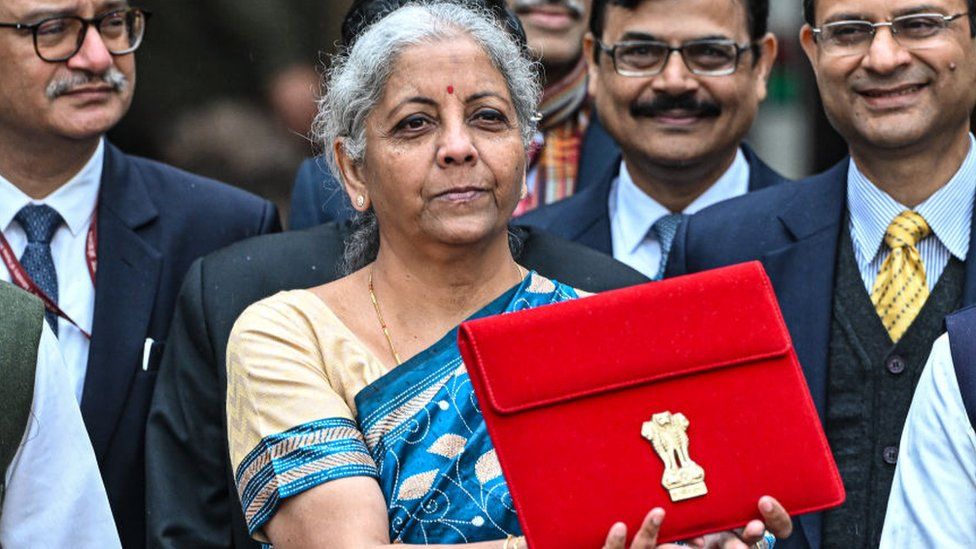 Getty Images
Getty ImagesIndian Prime Minister Narendra Modi’s government has presented its last budget before the country heads for general elections in the coming months.
The interim budget – or a stop-gap financial plan – will come into effect from 1 April until a new government presents a full-fledged budget after coming to power.
Not surprisingly, Finance Minister Nirmala Sitharaman has continued to fund infrastructure building – which has been a major driver of India’s economic growth. Over $130b has been allocated to build physical assets like roads and ports this year – a 11% jump from last year – but below the nearly three-fold trendline annual increases India has been seeing since 2019.
Ms Sitharaman said the government would build 20 million affordable houses in the next five years in addition to the nearly 30 million houses built already.
“This will provide obvious impetus to the rural economy both in terms of job creation and construction, while also fulfilling the government’s socio-economic agenda,” said Shubhada Rao, an economist and founder of QuantEco Research.
High public spending is expected to help keep India’s GDP growth at about 7%. The rapid expansion has allowed the government to collect higher taxes, and curb its fiscal deficit – the gap between what it earns and spends – by half a percent to 5.1% this year.
This would mean lower market borrowings, which has led to a rally in India’s bond markets. “The finance minister has laid the path for a 4.5% fiscal deficit target by 2026,” Ms Rao said.
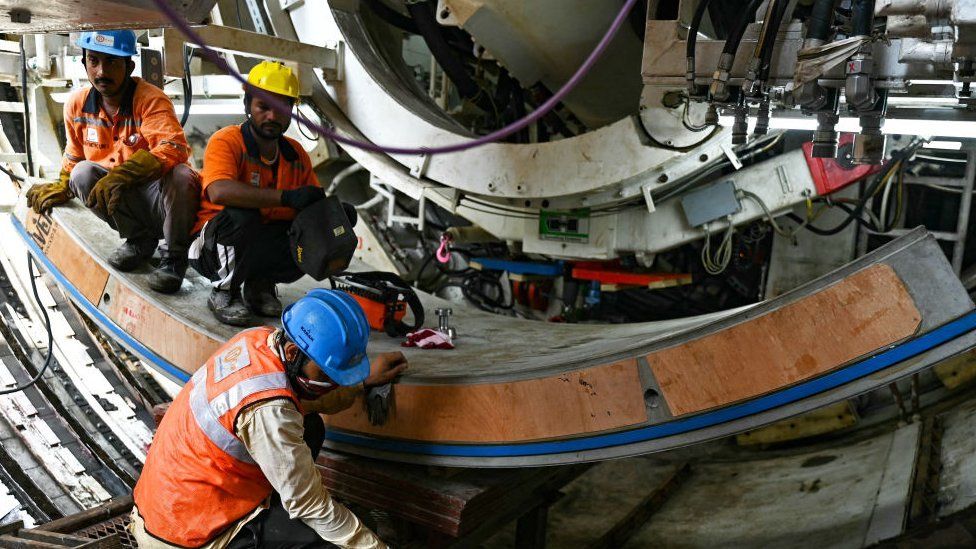
There were no new tax relief measures announced for the salaried middle class and Mr Modi’s pre-election spending plan also refrained from announcing big increases in social schemes – barring a programme to provide free electricity through rooftop solar projects to 10 million households – to lure voters.
India has already extended a free food programme, which was implemented during Covid-19, for the next five years to 800 million people.
The ruling Bharatiya Janata Party (BJP) is widely expected to retain power going by its wins in three provincial elections last year and Mr Modi’s high popularity ratings.
While this has reduced the government’s populist impulse, criticism over inadequate spending on health and education has been mounting.
Alongside an emphasis on building physical capital, there has not been enough attention paid to creating “human capital” in India, Dr Raghuram Rajan, the former governor of India’s central bank RBI, told the BBC. This was a worry given India’s unemployment crisis.
“We are flying blind” without credible data on jobs, Dr Rajan added. He also said malnutrition levels in parts of India are higher than many countries in sub-Saharan Africa which was “unacceptable” for an economy that was outpacing most others.
Economists have also expressed concern about private investment not picking up pace, and India’s consumption story painting a picture of uneven growth – with the urban rich getting richer and buying more premium products, while those at the bottom of the pyramid in the rural hinterland continuing to cutback on spending.
Read more India stories from the BBC:

-
-
1 February 2023

-
-
-
31 January 2023
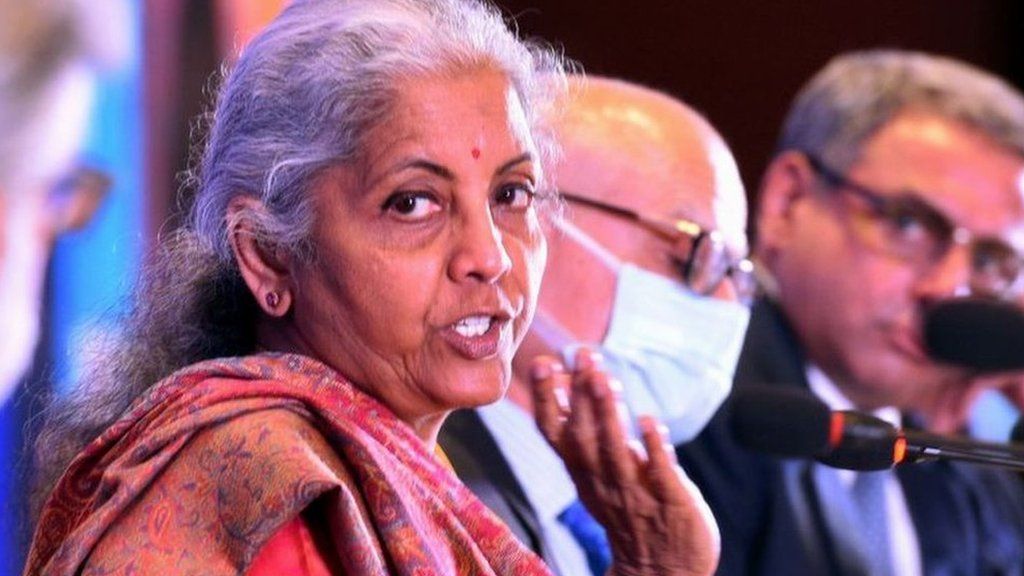
-
Two ANA planes clip wings at Osaka airport, no injuries reported
TOKYO: The wing tips of two passenger jets “scratched” each other at a Japanese airport on Thursday (Feb 1), an airport operator said, the latest in a string of aviation mishaps in the country. Reports said no one was injured in the incident involving the two All Nippon Airways aircraft atContinue Reading

